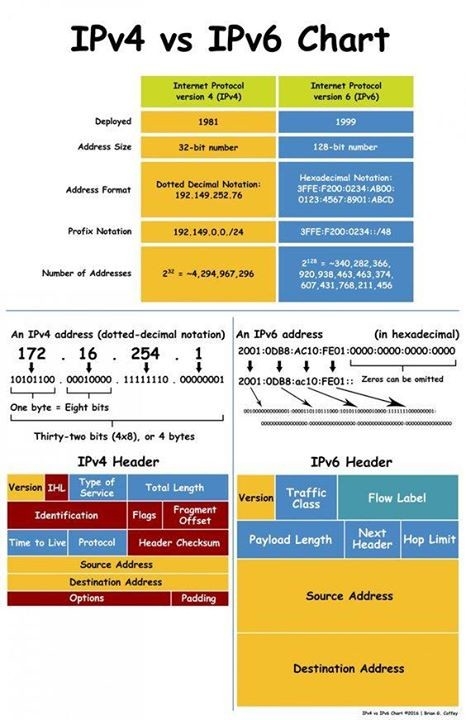IPv6 is a new IP protocol mandated by the federal government for compliance across all organizations, it is designed to replace IPv4, the Internet protocol currently deployed and used most extensively throughout the world.
IPv6 address a lot concerns and issues that are faced today in using IPv4.
The "v” and number ("4" or "6") in "IPv4 vs IPv6" refers to the related protocol version number. "IPv4" is of course "Internet Protocol version 4", and "IPv6" is subsequently "Internet Protocol version 6".
IPv4 is of course the older, more supported version of the internet address procedure. But ultimately, there are no longer any free IPv4 addresses, meaning all of them have been occupied or taken up. What does this mean exactly?
In a general sense, there will no longer be any alternative IPv4 addresses, directly meaning they will all be occupied and new users will not be able to venture into cyberspace. Although the realistic situation is not quite as dire.
Queue in IPv6, the latest Internet Protocol or address procedure. The older IPv4 only supports a maximum 32 bit internet address, which translates to 2^32 IP addresses available for assignment (about 4.29 billion total). IPv6 utilizes 128 bit web addresses, allowing a maximum 2^128 available addresses: 340,282,366,920,938,000,000,000,000,000,000,000,000; which if you couldn’t already tell is a very big number.
So basically the IPv4 protocol has run out of available addresses which is why most websites or internet servers are adopting the newer IPv6 protocol. In most cases, the two versions are compatible. This contrast between the two protocol versions is exactly what’s being referred to when "IPv4 vs IPv6" is mentioned.
The benefits of IPv6 include:
Simplified packet header for routing efficiency
Mandatory IP Security (IPsec) implementation for all IPv6 devices
Improved support for mobile IP and mobile computing devices
Enhanced multicast support with increased addresses and efficient mechanisms
A Chart of IPv4 vs. IPv6

Related IPv6 Topics:
Find everything about JavaScript in the cheat sheets, read the script blog or use the other free online JS tools.



















































































































